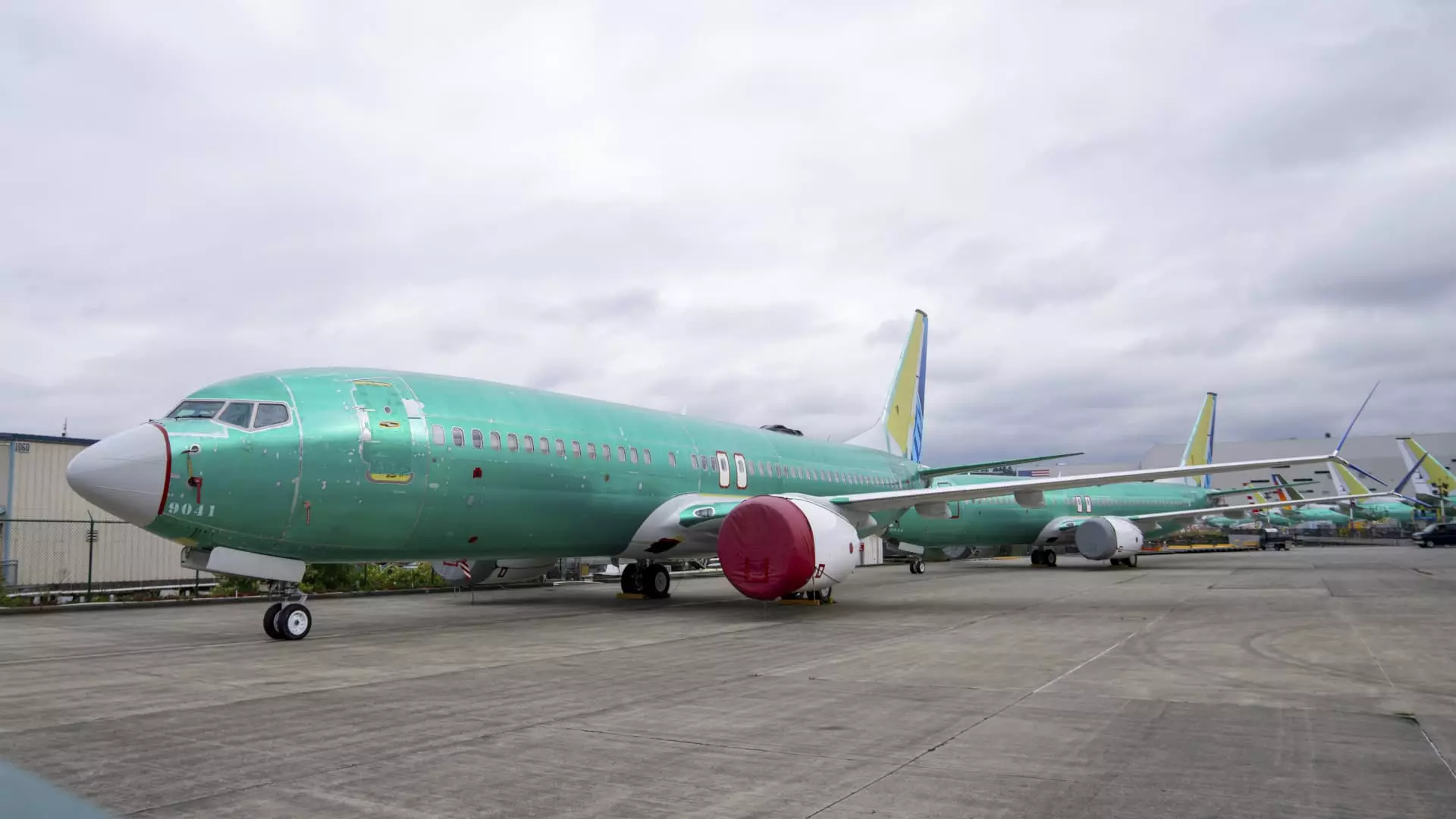Boeing, a titan in the aerospace industry, is facing substantial challenges that have led to the decision to slash its workforce by 10%, equating to approximately 17,000 jobs. This drastic measure comes amidst growing financial losses and ongoing labor disputes that have severely impacted production. In a climate of uncertainty and widespread economic strain, Boeing’s strategies and decisions reveal much about the broader issues facing the aviation sector today.
Boeing’s financial troubles are not a recent development; they have been compounded over several years due to various factors, including the infamous 737 MAX crisis, the ripple effects of the COVID-19 pandemic, and now, a significant machinists’ strike. The company anticipates reporting a staggering loss of nearly $10 per share for the third quarter, alongside a pretax charge of $5 billion across its commercial and defense divisions. This financial forecasting is alarming, especially for a company that is historically regarded as a market leader.
The decision to delay the launch of the new 777X wide-body airplane until 2026 underscores the extent of Boeing’s current predicament. Designed to compete in a sector increasingly dominated by Airbus, this delay pushes the model’s introduction further back, intensifying the competitive pressure and potentially eroding market share as rival manufacturers advance their own offerings.
The ongoing machinist strike, which has now entered its fifth week, exemplifies the strife between Boeing management and its workforce. This labor dispute arose following a rejected agreement between Boeing and the International Association of Machinists and Aerospace Workers. The strike is projected to cost Boeing over $1 billion per month, according to S&P Global Ratings. Such losses are not sustainable for a business that was already grappling with significant financial difficulties.
Boeing’s leadership has attempted to navigate these turbulent waters, but the situation has grown more complicated. Ortberg’s announcement of job cuts and the withdrawal of certain contract offers indicate a harsh, tactical approach aimed at economies of scale and long-term survival. Yet, these moves may exacerbate tensions with labor unions, possibly prolonging the strike and hindering recovery efforts.
In his memo to staff, Ortberg acknowledged the company’s “difficult position” and the pressing need for structural changes. The cuts will follow a period in which Boeing, along with its suppliers, aggressively hired to meet post-pandemic demand. Now, as market dynamics shift yet again, the need to pivot has never been clearer. The pressure on Boeing to realign its operations reflects a broader trend in the industry where profitability and efficiency have become paramount in an increasingly competitive environment.
However, the timing of these layoffs raises critical ethical questions. After previously ramping up hiring to counteract labor shortages during the pandemic, Boeing now faces backlash for reducing its workforce at a point when employees are still recovering from the effects of the pandemic. While the rationale for workforce reduction is undeniably tied to financial health, it signals a troubling approach towards human capital in times of crisis.
As Boeing attempts to restructure and regain its footing, external pressures remain significant. Credit agencies are scrutinizing its financial stability, warning that an investment-grade rating is at risk due to continued losses and cash flow challenges. The failure to restore robust financial health could hinder future investments and growth opportunities.
Yet, with adversity comes the potential for innovation. Boeing’s emphasis on restoring competitiveness might prompt new strategies in production, supply chain management, and labor relations—if successful, these changes could lead to a stronger foundation for future operations. Moreover, a renewed focus on technology and sustainable aviation solutions could align with broader industry shifts towards eco-friendly practices, providing Boeing with an opportunity to lead in that arena.
Boeing stands at a crossroads, grappling with significant internal and external challenges. The decision to cut 17,000 jobs may help stabilize the company’s finances in the short term, yet it risks alienating a workforce that has already borne the brunt of economic turbulence. Moving forward, Boeing must navigate these treacherous waters with a clear strategy that balances fiscal responsibility with a commitment to its employees and customers. The hope is that through careful restructuring and a focus on innovation, Boeing can regain its status as a leader in the aerospace industry while fostering a more resilient workforce prepared for the future.

